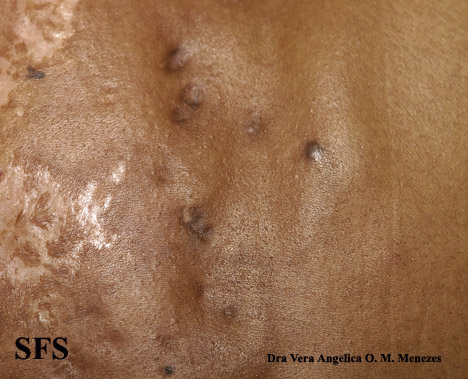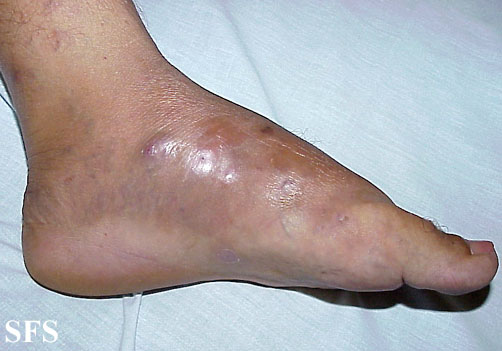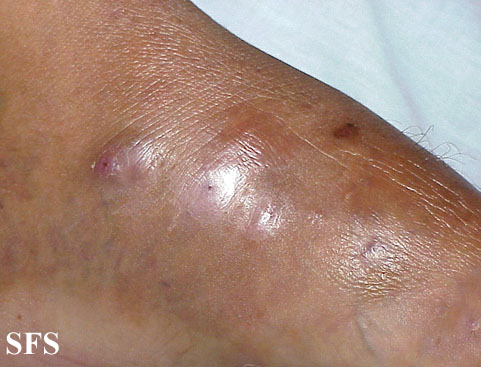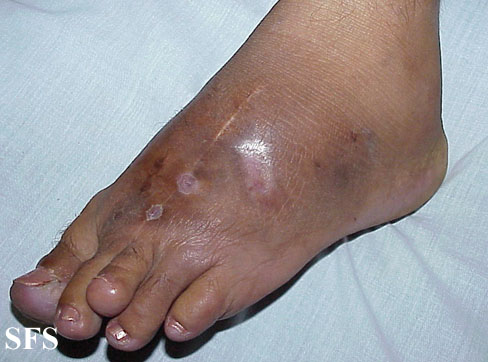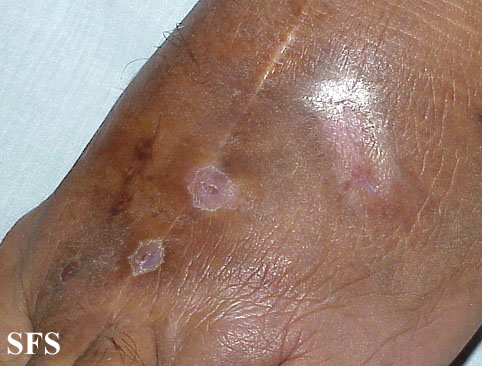Mycetoma
|
WikiDoc Resources for Mycetoma |
|
Articles |
|---|
|
Most recent articles on Mycetoma |
|
Media |
|
Evidence Based Medicine |
|
Clinical Trials |
|
Ongoing Trials on Mycetoma at Clinical Trials.gov Clinical Trials on Mycetoma at Google
|
|
Guidelines / Policies / Govt |
|
US National Guidelines Clearinghouse on Mycetoma
|
|
Books |
|
News |
|
Commentary |
|
Definitions |
|
Patient Resources / Community |
|
Directions to Hospitals Treating Mycetoma Risk calculators and risk factors for Mycetoma
|
|
Healthcare Provider Resources |
|
Causes & Risk Factors for Mycetoma |
|
Continuing Medical Education (CME) |
|
International |
|
|
|
Business |
|
Experimental / Informatics |
Editor-In-Chief: C. Michael Gibson, M.S., M.D. [1]; Associate Editor(s)-in-Chief: Jesus Rosario Hernandez, M.D. [2].
Synonyms and keywords: Madura foot.
Overview
Mycetoma, or Madura Foot, is an important disease in arid and semi-arid regions around the globe. It is found in Brazil, Mexico, the Sahel, in pan-Arabia, and in semi-arid areas of India. It is found as far north as Romania.
There are two known forms of mycetoma. The two forms of mycetoma are bacterial mycetoma and fungal mycetoma: bacterial mycetoma is known as actinomycetoma while the fungal form is called eumycetoma. Even at the level of electron microscopy the two forms of mycetoma are difficult to distinguish from one another.
Pathogenesis
The disease is usually acquired while performing agricultural work, and it generally afflicts men between 20 and 40 years old.The disease is acquired by contacting grains of bacterial or fungal spores that have been discharged onto the soil. Infection usually involves an open area or break in the skin. Pseudoallescheria boydii is one of many fungi spp. that causes the fungal form of madura foot (see below). The disease is characterized by a yogurt-like discharge upon maturation of the infection. Hematogenous or lymphatic spread is uncommon. Infections normally start in the foot or hand and travel up the leg or arm.
Diagnosis
Diagnosis of mycetoma is usually accomplished by radiology, ultrasound or by fine needle aspiration of the fluid within an afflicted area of the body.
Physical examination
Gallery
Skin
Extremities
Treatment
There are several clinical treatments available for this disease. They include surgery, Ketoconazole, Itraconazole and amputation. There is no sure-fire treatment available at this date. Nor is there available at this date a vaccine for mycetoma. Scientists at such institutions as The Mycetoma Research Center at The University of Khartoum in the Sudan are working on a cure.
Causative species
Species of bacteria that cause Mycetoma include:
Species of fungus that cause Mycetoma include:
